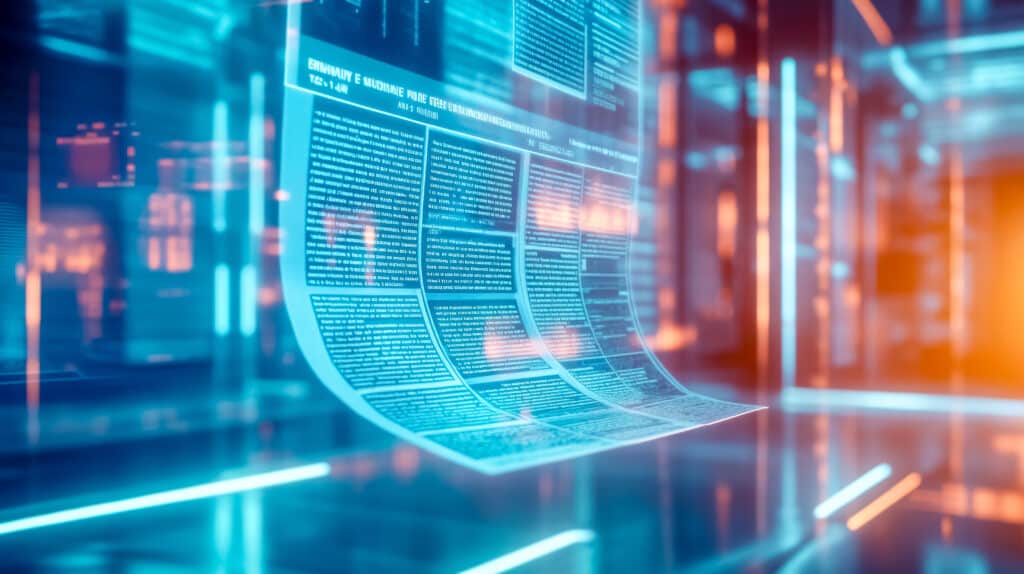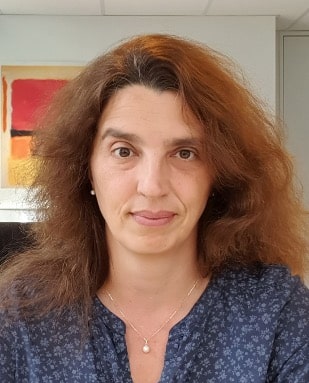AI and the media: a (r)evolution in investigative reporting?
- AI is an investigative tool that is gradually being integrated into the media industry.
- It can sort, organise and link content to an existing database to save time.
- However, it can miss information relevant to a subject and still requires human verification.
- The ability to analyse, interview, cross-reference sources or carry out in-depth investigations is still an exclusively human capability for the time being.
- Without being a revolution, AI represents an evolution in the relationship between journalism and technology.
Artificial Intelligence (AI) is everywhere, gradually finding it’s way into the information sector. Could AI be the next revolution in the media? The answer is more complex…
For the past ten years or so, the online press has been testing generative AI to automatically write articles by “sucking” information from reliable databases. In March 2015, before ChatGPT, Le Monde newspaper had used AI developed by the company Syllabs to write 36,000 articles covering the results of the regional elections in each commune, thanks to data from the Ministry of the Interior. A few months later, France Bleu followed suit, this time for the regional elections. Since 2021, L’Équipe has also been using AI to automate the production of content listing upcoming matches, followed by the time and channel of broadcast. Are journalists being replaced by robots?
AI: an investigative tool?
“Artificial intelligence is first and foremost a tool” says Ioana Manolescu, a computer science researcher at Inria specialising in large-scale data processing and fact-checking. “In editorial departments, there is a mixture of mistrust and fascination” she continues. “While text generation works well with American AI – which is more highly trained – French AI is still rather clumsy.” What’s more, the ability to analyse, interview, cross-check sources and carry out in-depth investigations remain exclusively human skills for the time being. So, there is no risk of journalists being replaced by “robot editors” for day-to-day work, as some people envisaged a decade ago.
“On the other hand, AI is very good at retrieving, organising or comparing content with an existing database” explains Ioana Manolescu. This is the origin of the Statcheck tool, which the researcher and her team have been developing in collaboration with Radio France since 2021. This AI allows statistical information found in an article to be cross-referenced with the INSEE database and, more recently, the Eurostat database.

“To do this, we had to train the AI on a lot of texts to enable it to learn, for example, that the concepts of “employment” and “unemployment” are related…” explains the scientist. Today, StatCheck can reconcile the way journalists write with the terminology used by statisticians. New functions continue to be added by the Inria teams, such as opening the system to external databases, then standardising sources in a single format. But the aim is to go even further…
Sort, organise, link
It all started with an investigation carried out by a journalist from Le Monde a few years ago, who combed through hundreds of documents to identify the links between scientists and industrial lobbies… all by hand. “It’s a colossal job!” comments Ioana Manolescu. So, the idea was born to create a tool to automate the work. Called ConnectionLens, it is now capable of interconnecting data taken from a highly heterogeneous corpus of documents (PDF, Excel, URL, etc.). “The AI extracts the information contained in these documents, such as names, organisations, dates, e‑mails, etc., and links them together. The name of a company in the acknowledgements of a thesis, for example, will be linked to the name of the author.”
But the algorithm is never the last link in the chain! For both StatCheck and ConnectionLens, a journalist systematically re-checks the work and the sources. “In my opinion, the only thing you shouldn’t try to ask the AI to do is to think” concludes the researcher.
Never infallible! The risk of false negatives
Le Monde’s Décodeurs teams have adopted this approach in their work. “AI is a very good way of sifting through information and saving time, by going from 3,000 names, for example, to the 200 that interest us” explains Maxime Vaudano, who coordinates the Les Décodeurs investigative unit. The journalist, who specialises in open-source and collaborative investigations, admits that they are not “very organised or very impressive at this stage” when it comes to editorial work.
AI is a very good way of sifting through information and saving time.
Indeed, although several large-scale investigations involving very large databases, such as the Panama Papers, have already been carried out in the past using more basic algorithms, this does not guarantee the reliability of AI today. “We keep in mind that it is an imperfect tool! There are, of course, false positives, which are pieces of information kept by the AI when they are not relevant, but the biggest risk remains false negatives” explains Maxime Vaudano. “When a piece of information falls by the wayside even though it’s relevant to our subject.”
So, the use of AI is far from systematic, and several “classic” investigative techniques are regularly used in parallel. “We are still involved in very long-term research, with a huge number of verification steps.” So, whatever the initial method used to obtain the information, it will be checked several times… by humans.
Evolution without revolution
Is this then a case of simple evolution rather than revolution? That’s certainly the view of Ioana Manolescu, who remains very cautious about the real capabilities of AI, but also about those of the hypothetical AGI (Artificial General Intelligence) of the future. “Yes, computers can beat humans at chess, so in that respect it’s all over. But we’re talking here about a very specific system! As for the rest, “intelligent” robots don’t know that water is wet or that time only flows in one direction, whereas a baby does…”
As for AI as an investigative tool, the researcher is more optimistic. “I tell myself that young journalists will be able to learn these techniques and bring them into their newsrooms.” Because the use of AI remains linked to a certain technological culture within the media, but also to the training available to journalists to get to grips with these systems.
“We don’t have enough time to put these tools in place, even if the technology is already available” adds Maxime Vaudano. But the situation is changing. Since 2023, Reporters sans frontières has been developing an AI prototype for journalists, dedicated to environmental issues and news verification. It has been undergoing trials since April 2024 with 12 partner media outlets. At the same time, in March 2024 the newspaper Le Monde entered into a financial partnership with OpenAI, the parent company of ChatGPT, to give their AI access to their archives. This alliance is being carefully monitored by teams of journalists, but it heralds an unprecedented partnership between the media and intelligent technologies.
















